Richard Ottley
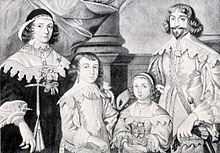
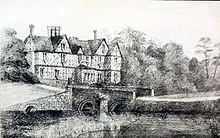
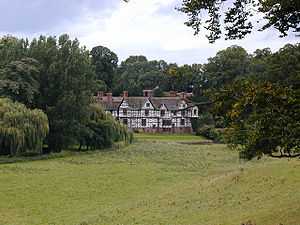
Sir Francis Ottley (5 August 1626–10 August 1670) was an English Royalist politician and soldier who served as a youth in the English Civil War in Shropshire. After the Restoration he played a prominent part in the repression of Parliamentarians and Nonconformists and was MP for Shropshire in the Cavalier Parliament.
Background, early life and education
Richard Ottley was the eldest son of
- Sir Francis Ottley of Pitchford, Shropshire, who was military governor of Shrewsbury for part of the English Civil War
- Lucy Edwards, daughter of Thomas Edwards of the College, Shrewsbury. She was the widow of Thomas Pope, another Shrewsbury resident.
The Ottley family were part of the landed gentry of Shropshire and claimed descent from the more ancient Ottleys of Ottley, near Ellesmere, Shropshire.[1][2] However, Thomas Ottley, the ancestor who bought Pitchford Hall in 1473, was a Merchant of the Staple[3] with a house in Calais[4] as well as in Shrewsbury. The Ottleys of Pitchford owed their status to wealth made as merchants of the thriving county town, with its monopoly in the finishing of Welsh cloth.[5]
Richard Ottley was born on 5 August 1626 and christened on 15 September.[6] He had a brother, Adam, who was born in 1628 and a sister, Mary, who was born in 1630. He entered Shrewsbury School in 1638[3] but his education beyond that stage was interrupted by the outbreak of the Civil War in 1642.
The Civil War and Commonwealth
Francis Ottley was quick to act to disrupt Parliamentary mobilization in Shropshire as Civil War threatened in the summer of 1642[7] and was instrumental in preparing the king's move from Nottingham to Shrewsbury in September, when the king knighted him.[8] Richard Ottley served under his father in the Shrewsbury garrison.[3] Sir Francis held the town after the king's departure and was formally appointed as military governor in January 1643.[8] He was removed by Prince Rupert in February 1644. Sir Francis was captured by Parliamentarian forces in February 1645 on the eve of the fall of Shrewsbury. Richard was present at the siege of Bridgnorth in 1646 and was covered by the surrender agreement negotiated by his father, which allowed the Royalist garrison to choose between peace and exile.
Both father and son chose peace and compounded for delinquency together[3] to regain their sequestrated estates. The process was prolonged and meanwhile Richard acquired some legal training at Gray's Inn, which he entered on 1 March 1647.[9] Adam, his younger brother, was admitted to Gray's Inn later the same year, on 2 August.[10]
Richard Ottley married Lady Lettice Ridgeway, probably in January 1649.[3] Shortly after, the process of compounding was finally resolved. Initially the Ottleys had been ordered to pay £1,860 but on 25 June 1649 this was reduced to £1,200 because they had debts already amounting to £4,000. Sir Francis died on 11 September, only weeks after the final decision.[8] In March 1650 Richard Ottley took the oath of loyalty to the Commonwealth and, with permission from the Parliamentary committees in Shropshire and Staffordshire, he was able to travel to the Midlands, settle his affairs and regain his estates.
Restoration and repression
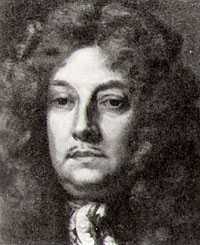
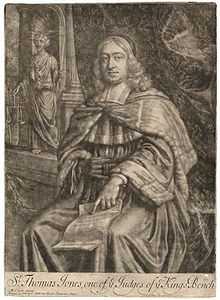
After General Monck's intervention against the remaining Commonwealth forces, at the beginning of 1660, Ottley came back into favour and began to take part in local government. He was appointed a Justice of the Peace for Shropshire in March 1660.[3] There are no records for 1660 but he and Adam, his brother, are recorded as sitting on the bench at the January quarter sessions of 1660/61.[11] Thereafter he does not appear in the record again until July 1662[12] and his attendance thereafter seems to have been sporadic.
Ottley contacted Charles II and in March received a commission to raise militia forces for the king's cause in Shropshire.[3] However, military support proved unnecessary and Ottley set off for Dover[13] to welcome Charles to England in May. Charles entered London on 29 May and Ottley wrote from there to his mother:
- "My most deare and evere honored Mother,
- "I prayse God we are safe come to towne, and his Matie, with his two brotheres, the duke of Yorke and duke of Glouster, are now at Whitehall. I met them at Canterbury, and had the happinesse to be of the life guard since Fryday last; wherein my content over ballanced the paynes I underwent. I most, humbly thanke yor Lap for your py which I shiall enquire after. I beg pardon that I am soe short in wrighting, being weary at p'sent: I humbly crave yor blessing: wth my duty and thanks for yor goodnesse to mine, for whom my hearty prayers to God are : I rest
- "Yor Laps most dutiful sonne and servant,
- "May 29, Ric. Ottley."
Shortly after the king's return, Ottley was knighted and appointed Gentleman of the Privy chamber.
At about the same time, Francis Lord Newport of High Ercall was appointed Lord Lieutenant of Shropshire and in July he made Ottley his Deputy Lieutenant.[3][14] Repression of parliamentarians began with claims that some had taken property from High Ercall and other places, followed by the ransacking of their houses, which resulted in a petition of protest from Thomas Hunt, an alderman of Shrewsbury, to the House of Commons, alleging he had lost goods to the value of £1377 18s. 9d. Edmund Waring, the former Parliamentarian governor of Shrewsbury, and Vavasor Powell, a Welsh Independent preacher and theologian, were arrested and imprisoned.[13] Ottley released Waring after a short time, as he was not persuaded there were good grounds or warrant for his detention. A Fifth Monarchist rising in London on 6 January 1661 panicked the Privy Council into demanding that the county authorities arrest “dangerous persons.”[15] Forwarding the Privy Council's letter to Ottley on 24 January, Newport rebuked him for being too lenient:
- "I send you enclosed a letter from the Councell, and a proclamation for the moderating of your proceedings. Though it may bee conceived a very ineffectual way for the securinge of persons to send warrants to a constable, yet if souldiers bringe the warrant to him, your ends may seeme accomplishable. You see the letter speakes of leadinge men. Therefore you did ill in releasinge Waringe, and you needed not have apprehended his ranting demand of a mittimus, which will serve him for discourse in his two pot houses. I would advise you to send for him agen, though not as a criminal by proofe, yet as a dangerous person, especially havinge the comand of the Councell for it."[16]
Ottley immediately did as he was bidden, with the result that by 4 March the Council had to write to Newport that the king was troubled by large numbers of petitions from those arrested on mere suspicion and that they were to be released forthwith. Many of those arresed were Quakers, who had suffered persecution even before the Restoration.
Nevertheless, Newport had already recommended Ottley and Sir Francis Lawley as MPs for the county,[17] and they were duly elected in April. However, Shrewsbury elected its town clerk, Thomas Jones, a leading Presbyterian although never an enthusiastic Parliamentarian,[18] and Robert Leighton, who had been uncommitted in the Civil War. Attempts under the Convention Parliament (1660) to accommodate the Presbyterians within the Church of England had come to nothing. Jones was determined to entrench Presbyterianism in Shrewsbury for as long as possible. In October 1661 he had a new deed of appointment drawn up for Francis Tallents, the Presbyterian minister of St Mary's church,[19] which was technically a Royal Peculiar but actually in the gift of the council. Jones was supported in this by the mayor, Richard Bagot, and the headmaster of Shrewsbury School, Richard Pigot. The Corporation Act of December 1661 gave Newport and Ottley an opportunity, as it sought to remove Presbyterians from office by forcing them to abjure the Solemn League and Covenant. Newport urged Ottley to use his seat at Westminster to speak out against Jones.[20] Ottley's intervention sent Jones back to Shrewsbury, where he tried to get all vacant places on the council immediately filled with supporters. However, the deputy lieutenants sent men to impose house arrest on the mayor and aldermen and removed them from office for refusing to take the oath. Adam Ottley was made town clerk in place of Jones. This was followed by a thorough purge of Nonconformists from public life. Tallents and Pigot were imprisoned in July 1662. In May 1663 Newport used the rumour of a plot to seize Chester Castle to send Ottley after supposed conspiratorial meetings of ejected ministers in Shrewsbury.
Cavalier Parliament
Ottley was elected to the Parliament of 1661–79, the longest-lasting English parliament, and did not survive to the end of it, dying in 1670. The parliament was known as the Cavalier Parliament because it was largely royalist in sympathy, although important divisions appeared long before it ended. Ottley's election was almost certainly the result of Newport's influence.[17] Newport, later first Earl of Bradford, was to dominate elections until his death in 1708, gradually evolving into a Whig and suffering for it when he opposed the succession of James II.
After being a very active lieutenant of Newport in the county, Ottley became a very active member of Parliament, which probably accounts for his increasingly sporadic participation in local and regional affairs. He was a member of no less than 230 committees.[3] Initially much of his work reflected his work at local level, with a focus on legislation that repressed religious dissent. He was on the committee that steered the Act of Uniformity 1662. He was also a member of the committees for the Conventicle Act 1664 and an second Corporations Act, both elaborating the Clarendon Code which bore down on both Catholics and Protestant Nonconformists. After the fall of Edward Hyde, 1st Earl of Clarendon in 1667, Ottley served on the committee to investigate his sale of Dunkirk to France and another which looked into the running of the fund for loyal and indigent officers, which had been set up by the king to compensate royalist officers ruined by the Civil War.
Ottley's own compensation took the form of commissions to collect taxes in Shropshire, which he undertook with his close friend and business partner, Richard Scriven, later MP for Bishop's Castle[21] First they were made receivers of the county's hearth tax, the key tax on property.[3] In 1663 they made a successful bid of £2,800 for the farm of the county's excise. However, the hearth tax concession was revoked in 1667 and Ottley and Scriven were ordered to pay arrears of £700. They sought to collect the amounts owing but this led to public disorder, with distrained goods and papers being stolen. To help his efforts at repayment, he was given any prize-money concealed during the Commonwealth that he could discover. He and Scriven were also granted all treasure trove found since the Restoration, as well as part of a Cheshire outlaw’s estate. However, Ottley they were still unsuccessful. Ottley's arrears were remitted shortly before he died in 1670, although Scriven did not settle his debt until 1682.[21]
Marriage and family
Richard Ottley was married to Lady Lettice Ridgeway, daughter of Robert Ridgeway, 2nd Earl of Londonderry. The Ridgeway family fortune was based on the first earl's exploitation of land assigned to him as an “undertaker,” or government contactor, during the Plantation of Ulster.[22] Richard and Lady Lettice Ottley had six sons and one daughter, five of whose baptisms are recorded in the Pitchford parish register.,[23] accessed 11 November 2013
- Thomas (baptised 18 February 1651), Sir Richard's heir, married one Elizabeth and died in 1695.[24]
- Richard (baptised 6 July 1652), died in infancy and was buried 30 March 1654.
- Adam (baptised 5 January 1655), Bishop of St David's 1713-23.
- Robert (baptised 26 July 1655)
- Lucy (baptised 28 February 1657) died in 1687[25]
- Francis (baptised 2 June 1660)
Dame Lettice Ottley was buried at Pitchford on 8 March 1669.[26] Sir Richard Ottley died on 10 August 1670 and was buried at Pitchford.[3]
Footnotes
- ↑
 Pollard, Albert Frederick (1901). "Ottley,Francis". In Lee, Sidney. Dictionary of National Biography (1st supplement) 3. London: Smith, Elder & Co.
Pollard, Albert Frederick (1901). "Ottley,Francis". In Lee, Sidney. Dictionary of National Biography (1st supplement) 3. London: Smith, Elder & Co. - ↑ Grazebrook and Rylands, p.380-381
- ↑ 3.0 3.1 3.2 3.3 3.4 3.5 3.6 3.7 3.8 3.9 3.10 B.D. Henning (editor): History of Parliament Online: Members 1660-1690 - OTTLEY, Sir Richard (1626-70), of Pitchford Hall, Salop. - Author: Eveline Cruickshanks. Accessed 1 November 2013
- ↑ Leighton, Stanley (1901): Shropshire houses past & present, no.3
- ↑ Andrew Thrush and John P. Ferris (editors): History of Parliament Online: Constituencies 1604-1629 - Shrewsbury - Author: Simon Healy, accessed 30 October 2013.
- ↑ Horton, p.13
- ↑ Coulton, p. 91
- ↑ 8.0 8.1 8.2 Wright, Stephen. "Ottley, Sir Francis". Oxford Dictionary of National Biography (online ed.). Oxford University Press. doi:10.1093/ref:odnb/20940. (Subscription or UK public library membership required.)Subscription required: free to most UK public library members.
- ↑ Foster, Folio 1020, p.243
- ↑ Foster, Folio 1027, p.245
- ↑ Lloyd Kenyon, p.71
- ↑ Lloyd Kenyon, p.79
- ↑ 13.0 13.1 Owen and Blakeway, p.478
- ↑ Coulton, p.136
- ↑ Coulton, p.137-8
- ↑ Owen and Blakeway, p.480
- ↑ 17.0 17.1 B.D. Henning (editor): History of Parliament Online: Constituencies 1660-1690 - Shropshire - Author: Eveline Cruickshanks. Accessed 11 November 2013
- ↑ B.D. Henning (editor): History of Parliament Online: Members 1660-1690 - JONES, Thomas I (1614-92), of Shrewsbury, Salop and Cerreghwfa, Mont. - Author: Eveline Cruickshanks. Accessed 11 November 2013
- ↑ Coulton, p.139
- ↑ Coulton, p.139-40
- ↑ 21.0 21.1 B.D. Henning (editor): History of Parliament Online: Members 1660-1690 - SCRIVEN, Richard (1625-83), of Frodesley, Salop. - Author: Eveline Cruickshanks. Accessed 11 November 2013
- ↑
 Dunlop, Robert Frederick (1896). "Ridgeway, Thomas". In Lee, Sidney. Dictionary of National Biography 48. London: Smith, Elder & Co.
Dunlop, Robert Frederick (1896). "Ridgeway, Thomas". In Lee, Sidney. Dictionary of National Biography 48. London: Smith, Elder & Co. - ↑ Horton, p.16
- ↑ Horton, p.24
- ↑ Horton, p.22
- ↑ Horton, p.17
References
Coulton, Barbara, 2010: Regime and Religion: Shrewsbury 1400-1700, Logaston Press ISBN 978 1 906663 47 6.
Foster, Joseph (1889): The Register of Admissions to Gray's Inn, 1521–1889, Hansard publishing Union. Accessed 4 November 2013 at Internet Archive.
Grazebrook, George and Rylands, John Paul (editors), 1889: The visitation of Shropshire, taken in the year 1623: Part II by Robert Tresswell, Somerset Herald, and Augustine Vincent, Rouge Croix Pursuivant of arms; marshals and deputies to William Camden, Clarenceux king of arms. With additions from the pedigrees of Shropshire gentry taken by the heralds in the years 1569 and 1584, and other sources. Pages 132-144. Accessed 17 October 2013 at openlibrary.org.
Horton, T.R. (editor) (1900): The Registers of Pitchford Parish, Shropshire, 1558–1812, Shropshire Parish Register Society. Accessed 4 November 2013 at Internet Archive.
Lloyd Kenyon, R. (editor) (1908): of the Orders made by the Court of Quarter Sessions for Shropshire, January, 1660–April, 1694. Shropshire County Records. Accessed at Open Library, 11 November 2013.
Owen, H. and Blakeway, J.B. (1825) A History of Shrewsbury, part missing, accessed 1 November 2013, at Internet Archive.